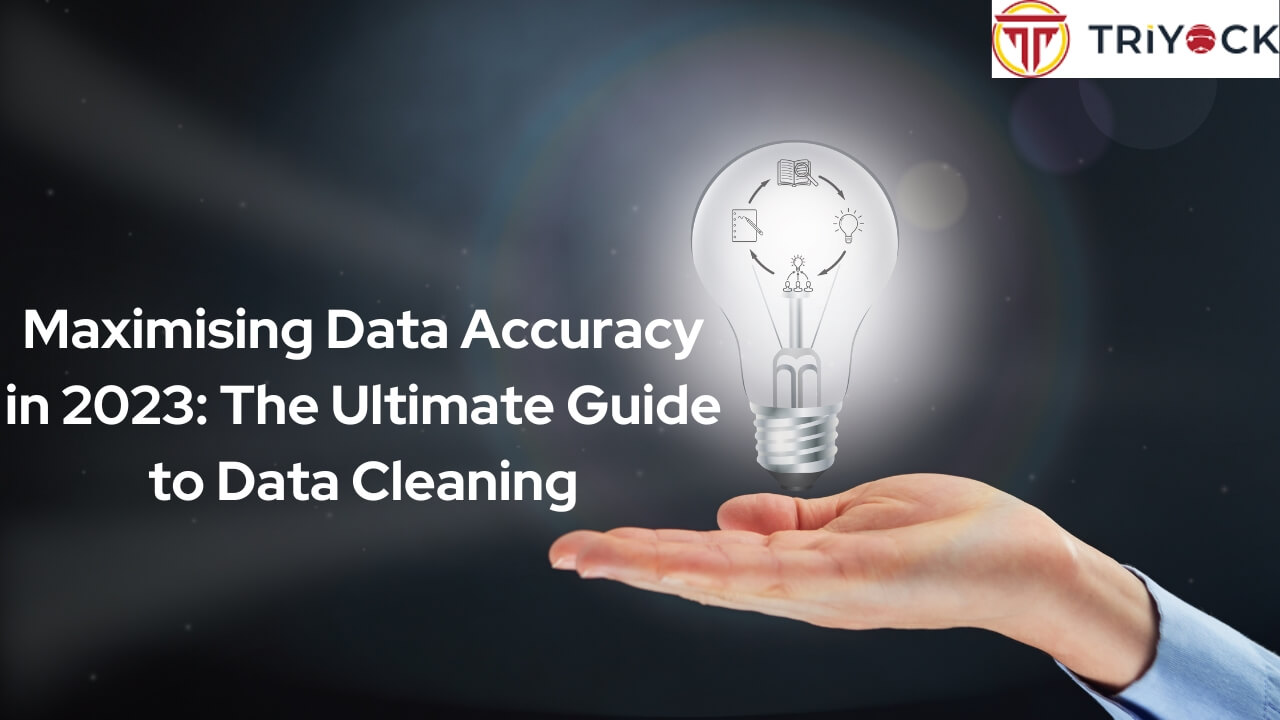
Maximising Data Accuracy in 2023: The Ultimate Guide to Data Cleaning
Rashmi Soni
1. Introduction
Data accuracy plays a crucial role in the overall success and growth of an organisation. If the relevant and accurate data is gathered by the company on time when it not only significantly decreases the risk but also enables the achieving of the desired goals easily. A business becomes more confident in forming its decisions. To help you do the same, this article will go through the complete guide to data cleaning so that maximum data accuracy can be attained. Here you’d get a complete understanding of what is data cleaning and what are the common techniques to perform it effectively. Keep reading to find out.
2. Understanding Data Cleaning
Data Cleaning refers to the process of preparing and analysing the data so that the incorrect, duplicate, irrelevant, incomplete, or improperly formatted data can be modified or removed accordingly. The removed data would not be beneficial for analysing data in the long run as it can provide wrong information or inaccurate results.
Benefits of Data Cleaning
Clean data proves to be beneficial for maximising data accuracy as it boosts productivity and provides accurate information to accompany your decision-making process. Here are the benefits of this process:
1. Minimum errors detected
2. Removes errors when humongous data is present
3. Helps understand where the data would be used and what are its functions
4. Detecting errors carefully to understand where they came from
Types of Data Cleaning
Data cleaning is an important part of improving the data accuracy and it involves several techniques. Let’s read about them in detail.
3. Common Data Cleaning Techniques
- Deduplication: During data collection, the chances of receiving duplicate entries increase. Deduplication is a cleaning technique where these duplicate entries are removed and a single figure is retained for accurate results.
- Data Parsing: Data parsing is when a range of data is converted from a single format to another. If the data is available in an unreadable format, data parsing helps turn it into the desired format for your convenience.
- Standardisation: When it comes to data, content consistency is important. A mix of content can lead to confusion and error at times. That’s when standardisation helps simplify the process.
- Data Enrichment: Data enrichment improves the existing information by providing for incomplete or missing data. It helps understand the data clearly without asking for more information.
4. Best Practices for Data Cleaning
- Establishing a data cleaning process: The first step to data cleaning is establishing a proper process. It is important to set expectations, formulate KPIs, and find out where the error is coming up.
- Data governance policies: A set of documents that assure that the information asset and data of the company are properly managed.
- Data cleaning tools and software: Different tools and software are used for data cleaning so that accurate information and results can be obtained.
5. Challenges and Pitfalls of Data Cleaning
- Data quality issues: As there is a high volume of data, the quality often gets compromised while trying to clean it. Misspellings, data skipping, data deletion, and many other problems can occur.
- Data security concerns: During the process of data cleaning, personal information is at risk. If it is not handled carefully, the company information can be used by cyberbullies.
- Resource constraints: Although the data is collected in bulk, the resources from which it can be verified are limited. This makes it uncertain whether the data collected should be removed or not.
6. Data Cleaning in Specific Industries
- Healthcare: Data cleaning ensures that accurate patient information is collected and timely preventive measures are taken in case of duplicate, incomplete, or inconsistent data.
- Finance: The process enables financial institutions to make their transactional process smooth and efficient. This helps in identifying if there is any error in the financial statement.
- Retail: Data cleaning ensures that the customer data is complete and accurate. All the duplicate or missing information can be removed or altered accordingly.
- Manufacturing: In the manufacturing industry, this process helps collect accurate and updated information so that the production calculations are free from errors.
7. Data Cleaning and Compliance
Data cleaning is a crucial step in analysing the data and thus it requires you to follow certain regulations and standards. This would ensure that the data-cleaning process is done efficiently and effectively. These regulations and standards include:
1.General data protection regulation
2. ISO 9001:2015
3. Open Data Institute Data Quality certification
8. Choosing a Data Cleaning Solution
Data cleaning is a meticulous process and requires specialised skills and expertise. That’s why while selecting a data-cleaning solution, it is important to consider some facts. This would also help you understand whether the process has to be outsourced or carried out in-house.
Key considerations when selecting a data cleaning solution are:
1. Understand what you require from the data cleaning tool and software
2. Certain tools are easy while others are difficult to use. It is important to understand whether your in-house team can use the difficult data cleaning tools to your company’s benefit or not.
3. The tool or software you choose should provide a smooth workflow and not complicate the process further.
4. The selected data cleaning solution should tick your quality check benchmarks.
Popular data cleaning tools and software:
1. OpenRefine
2. Winpure Clean & Match
3. Trifacta Wrangler
4. TIBCO Clarity
5. Melissa Clean Suite
It is advised to outsource the data cleaning process as it helps the company focus on its core goals, rather than getting stuck in the loop of data cleaning and analysing. Get in touch with a specialised data cleaning company and get your workflow streamlined without any scope for error.
9. Measuring Data Accuracy
There are various metrics for measuring data accuracy, depending on the type of data and the specific problem domain. Here are a few of them:
1. Accuracy: This is the most basic metric for measuring data accuracy. It is the percentage of correct predictions made by a model or algorithm.
2. Precision: Precision is the ratio of true positives to the sum of true positives and false positives. It measures the accuracy of positive predictions.
3. Recall: Recall is the ratio of true positives to the sum of true positives and false negatives. It measures the ability of a model to identify all relevant instances.
4. F1 Score: F1 score is the harmonic mean of precision and recall. It is a balanced measure that considers both precision and recall.
Monitoring data for improvement and accuracy is a continuous process that involves regularly evaluating the quality and relevance of data. Here are some tips for monitoring data:
1. Define clear metrics and goals: Set clear metrics and goals for data accuracy and quality. This will help you track progress and identify areas for improvement.
2. Regularly audit your data: Regularly audit your data to ensure it is accurate, up-to-date, and relevant. This can include checking for duplicates, missing values, and inconsistencies.
3. Use data validation techniques: Use data validation techniques such as cross-validation and outlier detection to identify errors or inconsistencies in your data.
4. Monitor data sources: Monitor the sources of your data to ensure they are trustworthy and reliable. This can include monitoring for changes in a data structure or format.
10. The Role of Machine Learning in Data Cleaning
Machine learning can play a significant role in data cleaning, which is the process of detecting and correcting errors or inconsistencies in data. Here are some of its benefits and roles in data cleaning:
1. Automated error detection: Machine learning algorithms can be trained to automatically detect errors in data. This can significantly reduce the time and effort required for data cleaning.
2. Standardisation and normalisation: Its algorithms can be used to standardise and normalise data, ensuring that it is consistent and uniform.
3. Outlier detection: They can be used to identify and remove outliers, which are data points that are significantly different from other data points in the dataset.
4. Missing data imputation: The algorithms can be used to impute missing data, by predicting missing values based on the patterns and relationships in the data.
11. Trends in Data Cleaning for 2023
As technology is taking a front seat in every process of the business, it is important to reap its benefits in data cleaning as well. This would help your company stay in power and get fresh solutions for the future. Here are the trends that are observed in data cleaning for 2023:
1. AI-powered data cleaning solutions: Artificial intelligence has improved the scope of development for better data cleaning algorithms. It helps detect and improve upon the errors with minimum human involvement.
2. The rise of data fabric: Data fabric uses automation systems to assist in an end-to-end integration of the data. This helps clean the available data efficiently.
3. Collaborative data cleaning: clean and analyse data in a collaborative environment so that the errors can be effectively identified and treated on time. This assures that there is a compromise with data quality in the long run.
Conclusion
Data cleaning is an important part of improving data accuracy and boosting the company’s growth. That’s why, it is advised to use the best strategies and techniques available to analyse and clean the inessential data effectively. Outsourcing the data cleaning process can be a beneficial decision for your company as it gives you time to accomplish your main goals and stay ahead of your competitors.

 Let’s get started
Let’s get started



 info@triyock.com
info@triyock.com